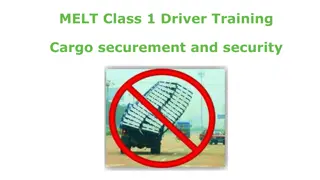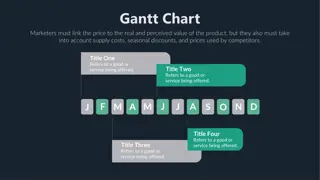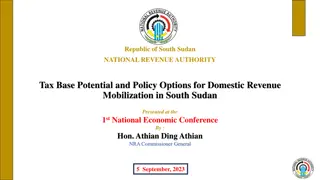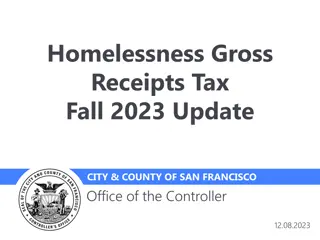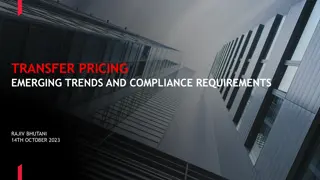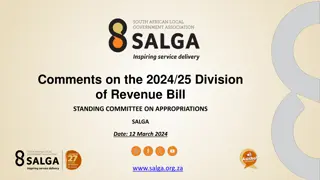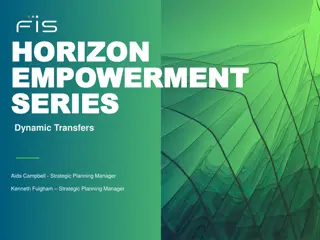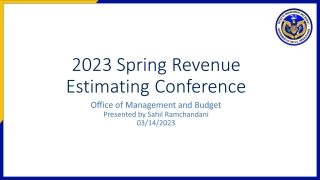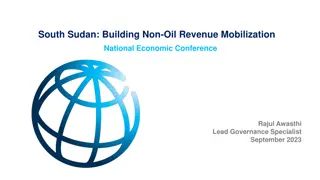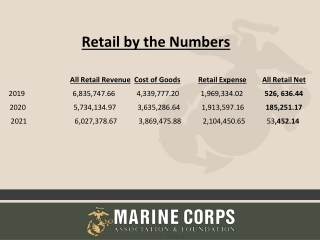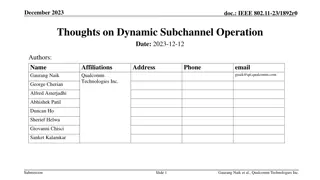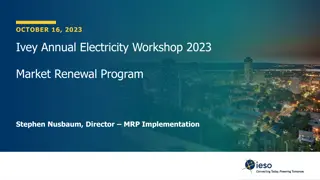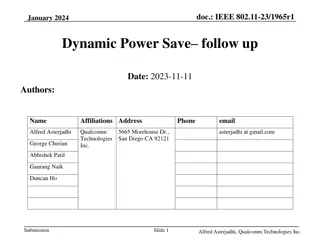Dynamic Pricing Strategies for Cargo Services by Revenue Technology Services
In today's fast-paced and competitive logistics industry, dynamic pricing has emerged as a pivotal strategy for maximizing revenue and improving efficiency. Revenue Technology Services (RTS), a leading provider of advanced cargo solutions, leverages dynamic pricing to optimize cargo service offerings. This article delves into the nuances of dynamic pricing strategies employed by RTS, highlighting their significance and impact on the cargo industry.n
- cargo cloud solutions
- cargo pricing
- cargo revenue management
- cargo solutions
- cargo strategy consulting
Download Presentation
Please find below an Image/Link to download the presentation.
The content on the website is provided AS IS for your information and personal use only. It may not be sold, licensed, or shared on other websites without obtaining consent from the author. Download presentation by click this link. If you encounter any issues during the download, it is possible that the publisher has removed the file from their server.
Presentation Transcript
Dynamic Pricing Strategies for Cargo Services by Revenue Dynamic Pricing Strategies for Cargo Services by Revenue Technology Services Technology Services
In today's fast-paced and competitive logistics industry, dynamic pricing has emerged as a pivotal strategy for maximizing revenue and improving efficiency. Revenue Technology Services (RTS), a leading provider of advanced cargo solutions, leverages dynamic pricing to optimize cargo service offerings. This article delves into the nuances of dynamic pricing strategies employed by RTS, highlighting their significance and impact on the cargo industry. Understanding Dynamic Pricing Understanding Dynamic Pricing Dynamic pricing is a flexible pricing strategy that adjusts prices in real-time based on various factors such as demand, supply, competition, and market conditions. In the context of cargo services, dynamic pricing enables companies to offer competitive rates while maximizing profit margins. RTS integrates sophisticated algorithms and data analytics to predict market trends and adjust pricing accordingly, ensuring optimal utilization of cargo space.
Key Components of Dynamic Pricing Key Components of Dynamic Pricing 1. 1.Real Real- -Time Data Time Data Analysis customer demand. By analyzing historical data and current market trends, RTS can predict demand fluctuations and adjust prices dynamically. This approach helps in capturing maximum value during peak demand periods and offering competitive rates during low demand periods. Analysis : : RTS employs real-time data analysis to monitor market conditions and 2. 2.Customer Customer Segmentation Segmentation : : Effective dynamic pricing requires a deep understanding of customer segments. RTS categorizes customers based on their shipping patterns, volume, and frequency. This segmentation allows RTS to tailor pricing strategies to meet the specific needs of different customer groups, enhancing customer satisfaction and loyalty loyalty. . 3. 3.Competitor Competitor Benchmarking Benchmarking : : RTS continuously monitors competitor pricing strategies to stay competitive. By benchmarking against industry standards and competitor rates, RTS ensures that its pricing remains attractive to customers while maintaining profitability. 4. 4.Predictive Predictive Analytics machine learning algorithms and artificial intelligence, RTS forecasts future demand and adjusts prices proactively. This foresight allows RTS to optimize cargo space utilization and avoid overbooking or underbooking scenarios. Analytics : : Predictive analytics is at the core of RTS's dynamic pricing strategy. By leveraging
Benefits of Dynamic Pricing in Cargo Services Benefits of Dynamic Pricing in Cargo Services 1. 1.Maximized Revenue: Maximized Revenue: Dynamic pricing helps RTS maximize revenue by adjusting prices based on real-time market conditions. During periods of high demand, RTS can increase prices to capture additional revenue, while offering discounts during low demand periods to attract more customers. 2. 2.Enhanced Efficiency Enhanced Efficiency: By optimizing cargo space utilization through dynamic pricing, RTS reduces the likelihood of empty cargo holds. This efficiency translates into cost savings and improved service delivery, benefiting both RTS and its customers. 3. 3.Improved Customer Experience Improved Customer Experience: Dynamic pricing enables RTS to offer customized pricing solutions that align with individual customer needs. This personalization enhances the overall customer experience, leading to higher customer retention and satisfaction. 4. 4.Competitive Advantage: Competitive Advantage: In the highly competitive cargo industry, dynamic pricing gives RTS a significant edge. By staying ahead of market trends and adjusting prices in real-time, RTS can attract more customers and maintain a strong market position.
Conclusion Conclusion Dynamic pricing is a game-changer for cargo services, offering a strategic advantage in maximizing revenue and enhancing efficiency. Revenue Technology Services leverages advanced data analytics, customer segmentation, and predictive algorithms to implement effective dynamic pricing strategies. By continuously adapting to market conditions, RTS ensures that its cargo solutions remain competitive and aligned with customer needs. As the logistics industry continues to evolve, dynamic pricing will undoubtedly play a crucial role in shaping the future of cargo services.
THANK YOU THANK YOU


